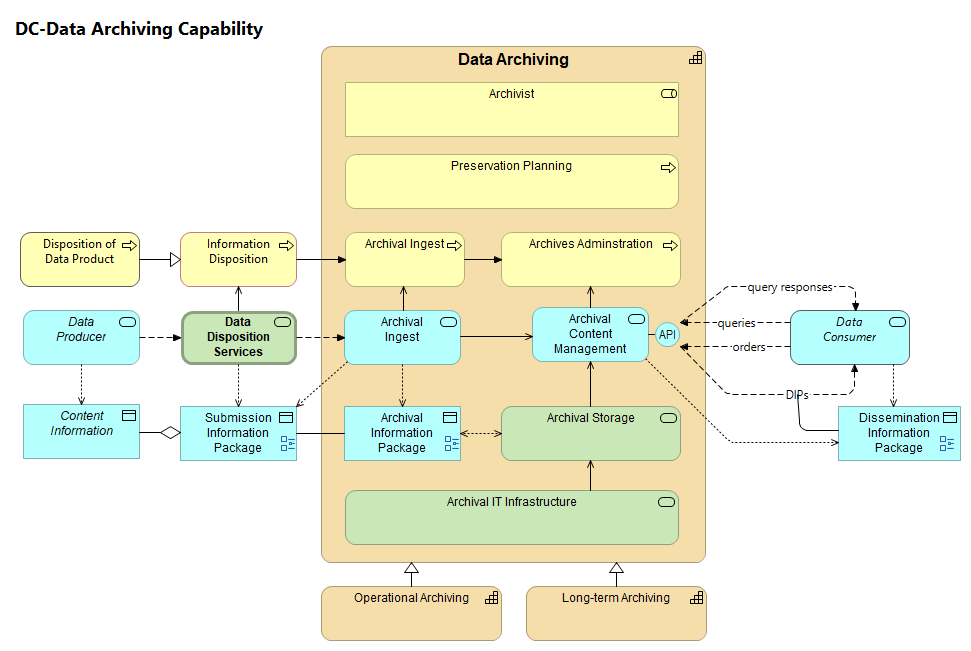
ISO 14721:2012 defines the reference model for an open archival information system (OAIS). An OAIS is an archive, consisting of an organization, which may be part of a larger organization, of people and systems that has accepted the responsibility to preserve information and make it available for a designated community. It meets a set of such responsibilities as defined in this International Standard, and this allows an OAIS archive to be distinguished from other uses of the term "archive". The term "open" in OAIS is used to imply that ISO 14721:2012, as well as future related International Standards, are developed in open forums, and it does not imply that access to the archive is unrestricted.
The OAIS functional model is widely used to establish workflows and technical implementations. It defines a broad range of digital preservation functions including ingest, access, archival storage, preservation planning, data management and administration. These provide a common set of concepts and definitions that can assist discussion across sectors and professional groups and facilitate the specification of archives and digital preservation systems.
OAIS also defines the information model that needs to be adopted. This includes not only the digital material but also any metadata used to describe or manage the material and any other supporting information called Representation Information.
ISO 14721:2012
* provides a framework for the understanding and increased awareness of archival concepts needed for long term digital information preservation and access,
* provides the concepts needed by non-archival organizations to be effective participants in the preservation process,
* provides a framework, including terminology and concepts, for describing and comparing architectures and operations of existing and future archives,
* provides a framework for describing and comparing different Long Term Preservation strategies and techniques,
* provides a basis for comparing the data models of digital information preserved by archives and for discussing how data models and the underlying information may change over time,
* provides a framework that may be expanded by other efforts to cover long term preservation of information that is not in digital form (e.g. physical media and physical samples),
* expands consensus on the elements and processes for long term digital information preservation and access, and promotes a larger market which vendors can support, and
* guides the identification and production of OAIS-related standards.
Although originally developed by the Consultative Committee for Space Data Systems, as digital preservation has become a discipline unto itself, the OAIS has become the standard model for digital preservation systems at many institutions and organizations. OAIS-compliance has been a stated fundamental design requirement for major digital preservation and repository development efforts at the National Archives and Records Administration, Library of Congress, British Library, Bibliothèque nationale de France, National Library of the Netherlands, the Digital Curation Centre in the UK, OCLC (the Online Computer Library Center), the JSTOR (Journal Storage) scholarly journal archive, as well as several university library systems